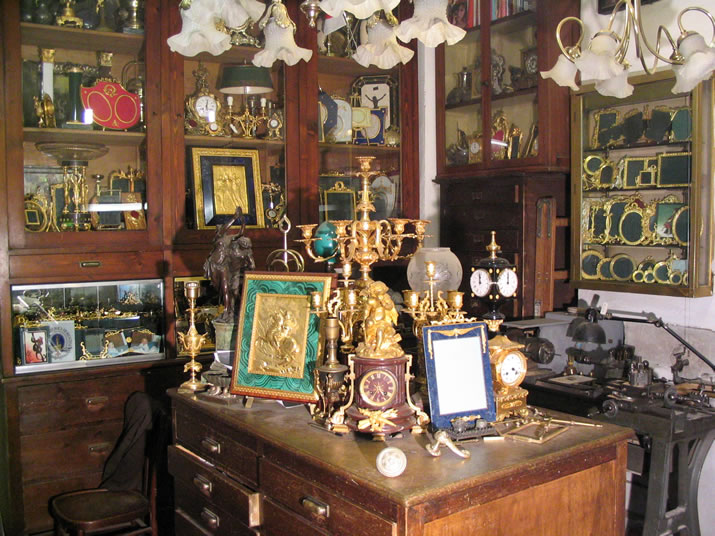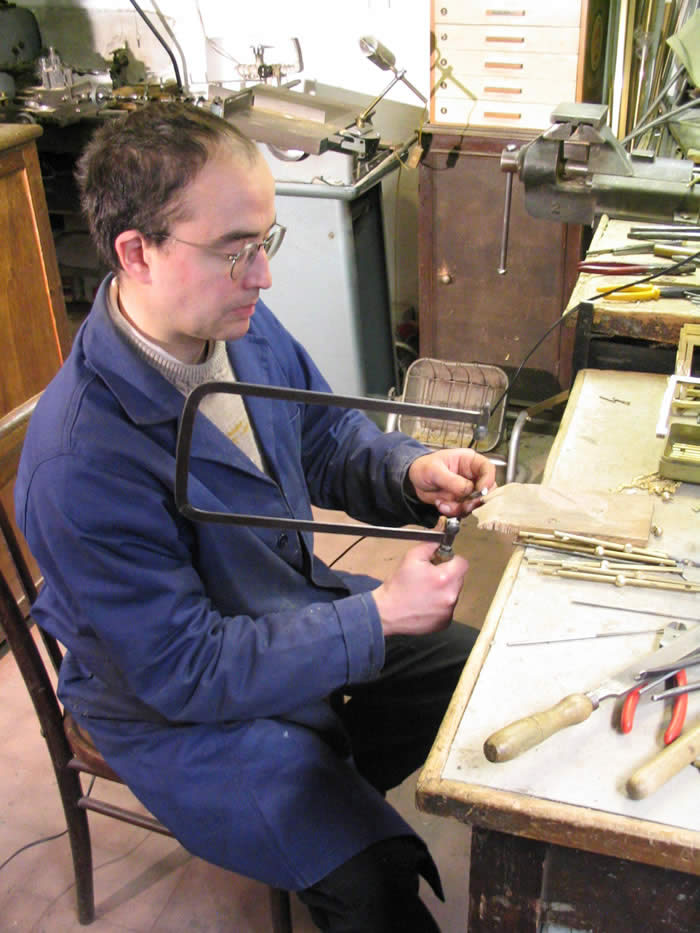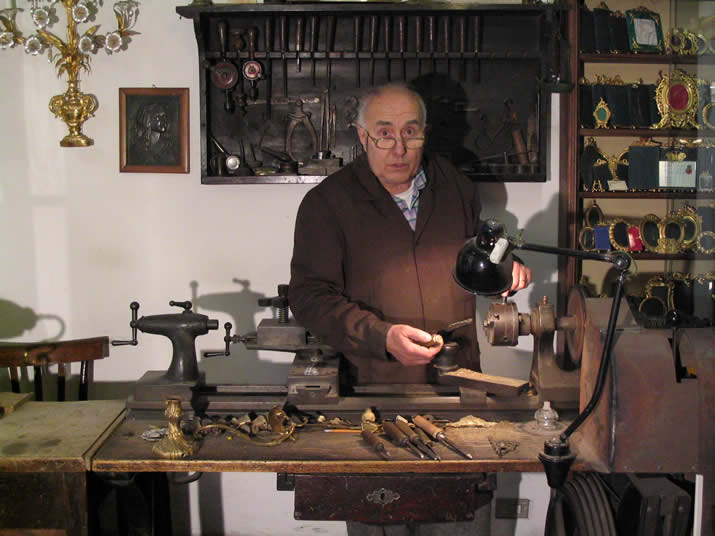
Center of the front room of the shop.
Duccio and Lamberto Banchi
"Bronzisti" Artisans in Bronze
| Home | About Us | Products | Location |
Duccio and Lamberto Banchi
Bronze crafting of home furnishing
Custom door fixtures
Riproductions of artworks
Restoration of bronze antiques
Photo frames

Center of the front room of the shop.

Duccio in his favorite chair

Lamberto Banchi at the lathe
A ┐Bronzista└ (that is, ┐Bronzist└) is an artisan who crafts ornamental objects from, not surprisingly, bronze. Notwithstanding the name, a bronzista more likely craft items in brass. Bronze is an alloy of copper and tin while brass is an alloy of copper and zinc. The proportions of metals in the alloys can be varied depending the level of hardness or workability desired in the ally. One of the main differences between the two alloys stays in the fusion point: bronze melts at 1100 degrees C and brass at 900 C. When in a molten state, brass is much more fluid than bronze, making it suitable for casting small and precise objects. Bronze tends to be more suitable for larger objects or where greater hardness is desired. For example church clocks or cannons are more likely to have been cast in bronze, whereas pendulum clocks, statuettes, ornamental decorations, and picture frames are more likely to be made of brass.
The first step is to start with a design, either than of the Banchi┌s or one brought in by a client. The design is then transformed into a three dimensional form by carving a wood model of the desired object. This wood model is then pressed into a wax form. In the foundry, this form will be placed in a ┐clamp└ with pressed earth (the so called ┐french Earth└), then removed, forming an empty space called a moulder (or founding). In case the object requires a production run of more than a few examples, the moulder will be made of rubber. This moulder will be poured with the molten metal alloy until full. After the metal has sufficiently cooled, the moulder will be opened and the cast metal object removed. At this point, the surface of the object is quite rough. It is the finishing of this rough object that determines the quality of the work and demonstrates the skill of the bronzist. Frequently, the final object (for example, a picture frame or a table lamp) is welded together from several cast. The Banchis finish the metal objects almost entirely by hand using tools such as files. After the surfaces of the objects are smoothed, the object are chiseled by hand in certain areas in order to obtain the ┐defined└ look characteristic of high quality bronze or brass objects. This hand-worked look, along with other characteristics such as the heft of the objects, is what clearly distinguishes the bronzist┌s crafts from mass produced brass objects with their stamped-out look. Finally, the object is finished by being polished, silver or gold plated, or given a particular ┐patina└ requested by the customer.